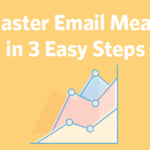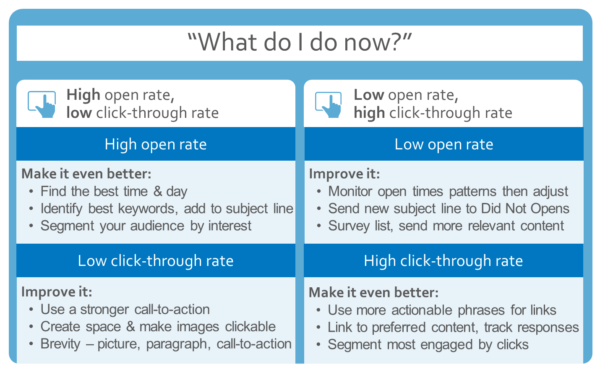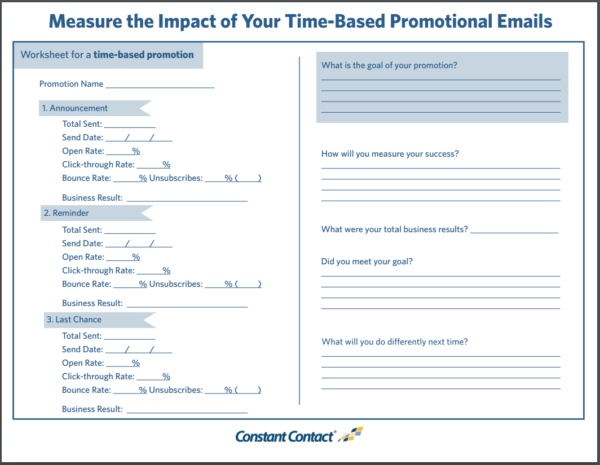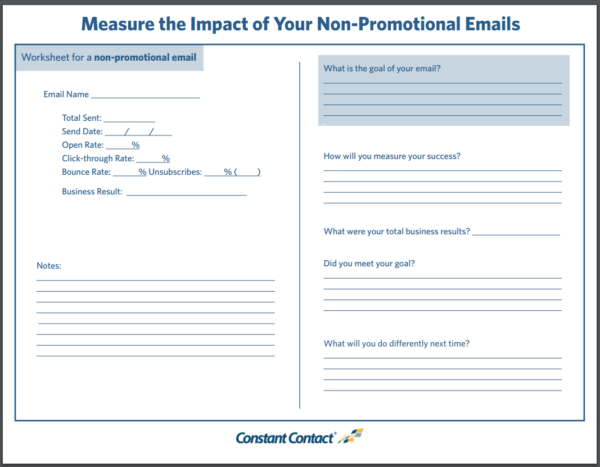How to Master Email Measurement in 3 Easy Steps

If someone asked you how email marketing is helping your business, what would you say?
Chances are you wear a lot of hats at your small business or nonprofit and maybe numbers aren’t your strong suit.
You’d much rather focus on connecting with people in person to sell more of your products and services — or raise awareness for your nonprofit.
How can you be sure that email marketing is worth your time?
Let’s take some of the dread and mystery out of measuring the impact of your email marketing, so you can be confident your emails are helping you achieve your business goals.
New to Constant Contact? You can try it out with a free 60-day trial.
Use the Triple-A Approach to Email Measurement
1. Analyze
To really be in control of your marketing, it’s crucial that you know how to interpret the results of your email campaigns.
Email marketing tools like Constant Contact provide easy-to-read reports that help you track your marketing success in real-time.
Start by taking a look at the open and click-through rates of your latest email campaigns. Then, compare your results with averages in your industry.
Constant Contact’s Industry Average Chart makes it easy for you to see how your campaigns stack up in relation to others in your industry.
And you might find it encouraging to know that if you’re currently getting at or above a 17 percent open rate and a nine percent click-through rate, you’re in good shape across the board! For any industry, that’s a positive level of engagement.
Now that you have a good benchmark to start with, it’s time to go beyond opens and clicks and see how your emails are impacting your bottom line.
2. Assess
Your marketing campaigns must support your business goals; otherwise, why go through the trouble?
We’ve created worksheets to help you keep track of email marketing metrics and business goals so that you always have a clear picture of how your marketing efforts are working to support your business.
There are two different worksheets based on your business goal:
- If you’re sending a sales email, download and print this worksheet to keep track of your results:
- Sending a general newsletter? This worksheet is for you.
Before you even send an email campaign, start filling out the worksheets by answering two important questions: What is the goal of your email? And How will you measure your success?
To identify your goal, think about what it is that you’re hoping the campaign will achieve. Are you hoping to gather more registrants for a fundraising event? Do you want to sell 20 percent more items than last year? Are you looking to get three new consultations booked?
Whatever your goal is, the more specific you can be the better. That way you’ll know in just a glance if you hit the mark or not.
After you’ve sent your email, visit your email reports a couple days later and fill out your worksheets with the results.
Here are some key metrics to focus on:
Total Sent: the total number of contacts you sent your email to
Send Date: the date an email was sent to subscribers
Open rate: the percentage of subscribers who opened your emails
Click-through rate: the percentage of subscribers who opened your email and clicked on links within your email
Bounce rate: the percentage of emails that didn’t make it to the intended recipient
Unsubscribe/Opt-out rate: an unsubscribe or ‘opt-out ‘occurs when one of your contacts no longer wants to receive your emails and unsubscribes from your list
Tip: You can require that subscribers provide a reason for opting out from your emails.
3. Adjust
The final step is where the marketing magic happens.
Using the stats you filled out on your worksheets, answer the questions:
What were your total business results?
For a non-promotional email, this should be pretty straight-forward. For a time-based promotional email, compile your results to get the total business result.
Did you meet your goal?
That should be a simple yes or no answer based on the goal you set at the beginning.
Now, for the fun part:
Once you have figured out how an email performed and how it helped you reach your goals, adjust your strategy to optimize your marketing.
Let’s say you’re reviewing your reports for an email and discover that you had a high open rate, but a low click-through rate. This means that people were opening your email, but weren’t engaging with the links that were offered in the email.
To improve that click-through rate in your next mailing, here’s what to do next:
- Review your calls to action in your email. Consider the wording of your call to action — is it clear and intriguing? Is it telling people exactly the action they should take and why it matters to them?
- Create more white space so the email doesn’t feel overwhelming. If your email contains multiple sections, break up different topics so readers can choose what they want to read. You may also want to try breaking up each topic into separate emails to send shorter emails more frequently.
- Think about how much content is in your email. Stick to a picture, a paragraph, and a strong call-to-action that’s easy to find and click. If you have too many calls-to-action (or none at all), readers will not know what you wanted them to do.
Let’s look at a different scenario:
What should you do if you had a low open rate and a high click through rate?
This tells you that although not many people opened your email, the ones who did were very interested in your content.
Here’s what you can do to get more people to open your emails so they too can see your great links and content:
- Find your best time to send – Are you sending at the times and days that the majority of your subscribers are likely to read your email? Here’s how to find the best time for your business.
- Try a different subject line. Make a copy of your sent email and try resending your email with a better subject line. Don’t resend to your whole list; only send to the contacts in the Did Not Open list of your email. Then, you’ll have two separate reports to compare with the Campaign Comparison Tool to see which had the better open rate.
- Make sure your emails are relevant to your audience. Keep track of topics that are popular for your audience. Survey them with a poll to nail down what they want to read.
This chart will help guide you along when it comes to adjusting your marketing strategy to continue to improve your marketing and reach your business goals.

Be more confident in your email marketing results
Measuring your email marketing is not everyone’s favorite thing to do — but knowing what’s working and what isn’t will save you time, effort, and money in the long run.
And that’s certainly something to get excited about.
New to Constant Contact? You can try it out with a free 60-day trial.
The post How to Master Email Measurement in 3 Easy Steps appeared first on Constant Contact Blogs.
Contributers : Constant Contact Blogs https://ift.tt/2oiPRC1


















No comments:
Post a Comment